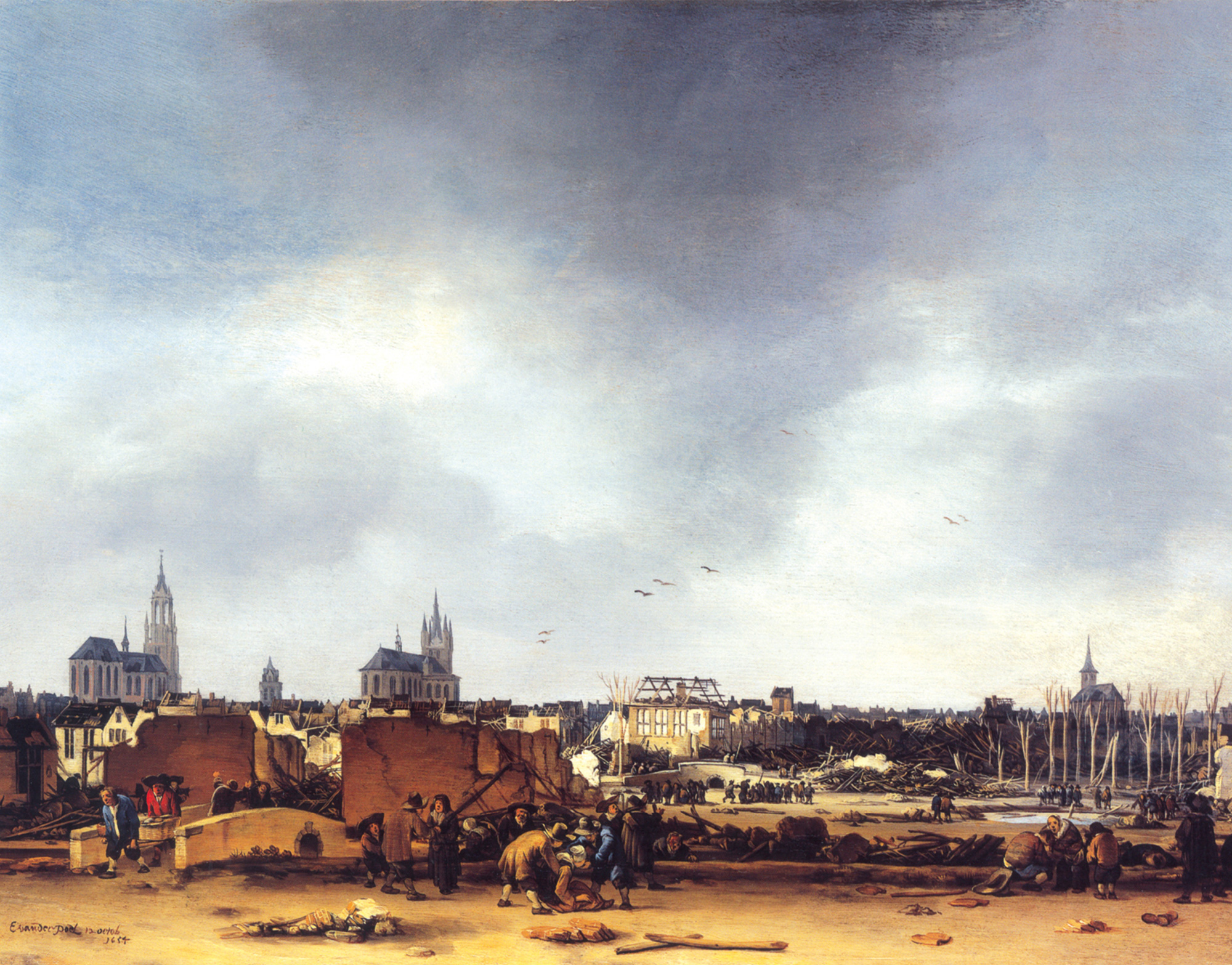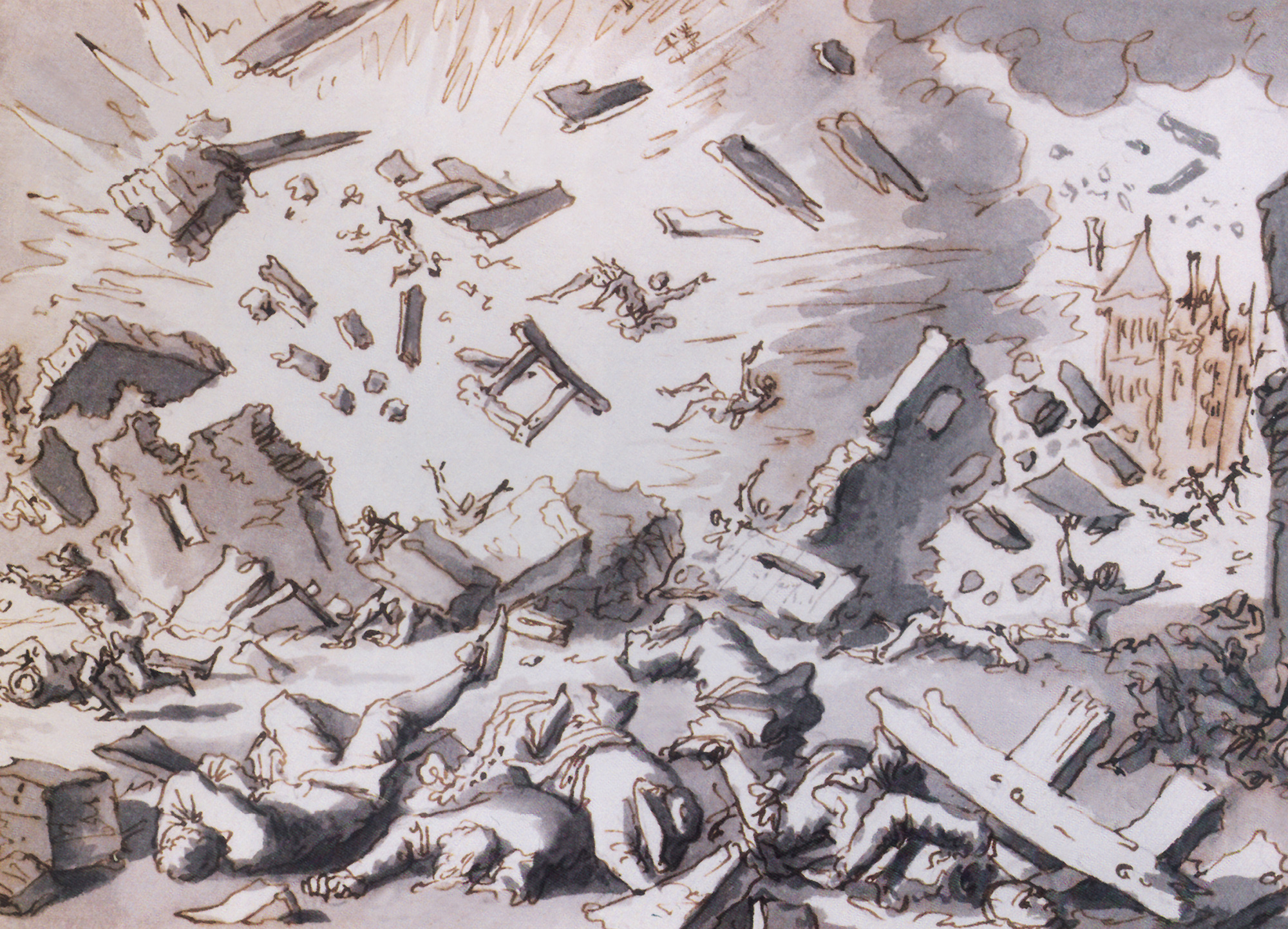Blow Up
Explosive adventures in the air’s uncharted ways
Brian Dillon

On Monday, 12 October 1654, shortly after half past eleven in the morning, Cornelis Soetens, keeper of a gunpowder store in a former convent of the Order of Poor Clares in the Doelenkwartier district of Delft, unlocked the magazine to take a sample of the powder. A tremendous explosion followed, and much of the center of the city was destroyed. The store had contained ninety thousand pounds of gunpowder; the hideous report, it was said, could be heard at a distance of fifty miles. Although the precise number of casualties is unknown, hundreds were certainly killed, among them the painter Carel Fabritius, buried under the rubble of his house while at work on a view of Delft’s old church. (The church survived largely intact. Among the other anecdotes attached to the Delft Thunderclap, as it became known, is the story of a year-old child, discovered two days later, sitting safely beneath the beam that had saved it, playing and sucking on an apple.) The blast left behind a huge crater in the center of the city; the empty space was subsequently used as the city’s horse market.
Numerous artistic renditions of the Delft explosion were completed in the months that followed. The most celebrated is that of Egbert van der Poel, a native of the city who painted and drew the disaster and its aftermath several times before he left Delft for Rotterdam in 1655. Van der Poel’s A View of Delft after the Explosion of 1654 shows the town as a strip of rubble and displaced human figures occupying the bottom quarter of the canvas; the rest of the painting is taken up by a lowering grey sky interrupted only by a few birds and the spires of the two churches and town hall. The crater, on the right, is surrounded by curious onlookers and a line of denuded white trees. A moraine of rubble divides the immediate scene of destruction from the foreground, where the injured or dazed are attended to, and a tiny figure rushes onto a bridge at the left, arms aloft in despair or relief as he greets another. A later, compositionally identical painting by Daniël Vosmaer depicts the same scene but with fewer survivors in the foreground and a pale gray sky turning blue, while a drawing by Gerbrand van den Eeckhout brings us closer to the shocked and mangled citizenry: in the bottom right-hand corner, a toddler and a tiny baby are oblivious to the desolate scene around them.

For the most part, this is how the Delft explosion was drawn and painted: in terms of its aftermath, the unthinkable moment of detonation having already taken place. But a drawing by another Dutch artist, Jan Luyken, begins to suggest something of the imaginative bravado required to depict the event itself, and more fundamentally to broach the complex and competing temporalities involved in the representation of explosions. Here, the explosion is a white flash surrounded by smoke, toppling masonry, and bystanders hurled to the ground by the blast wave. The most striking feature of Luyken’s rendition, however, is just how much of the city is actually airborne, including large portions of the military magazine itself and several doomed persons, quite intact at the epicenter of the explosion, but surely already lost. Luyken’s drawing is a modest instance of one possible means of representing an explosion: as an agglomeration of articles suspended in space, an almost habitable or leisurely array, curiously serene in its very effort to portray an instant of appalling acceleration and dissolution.